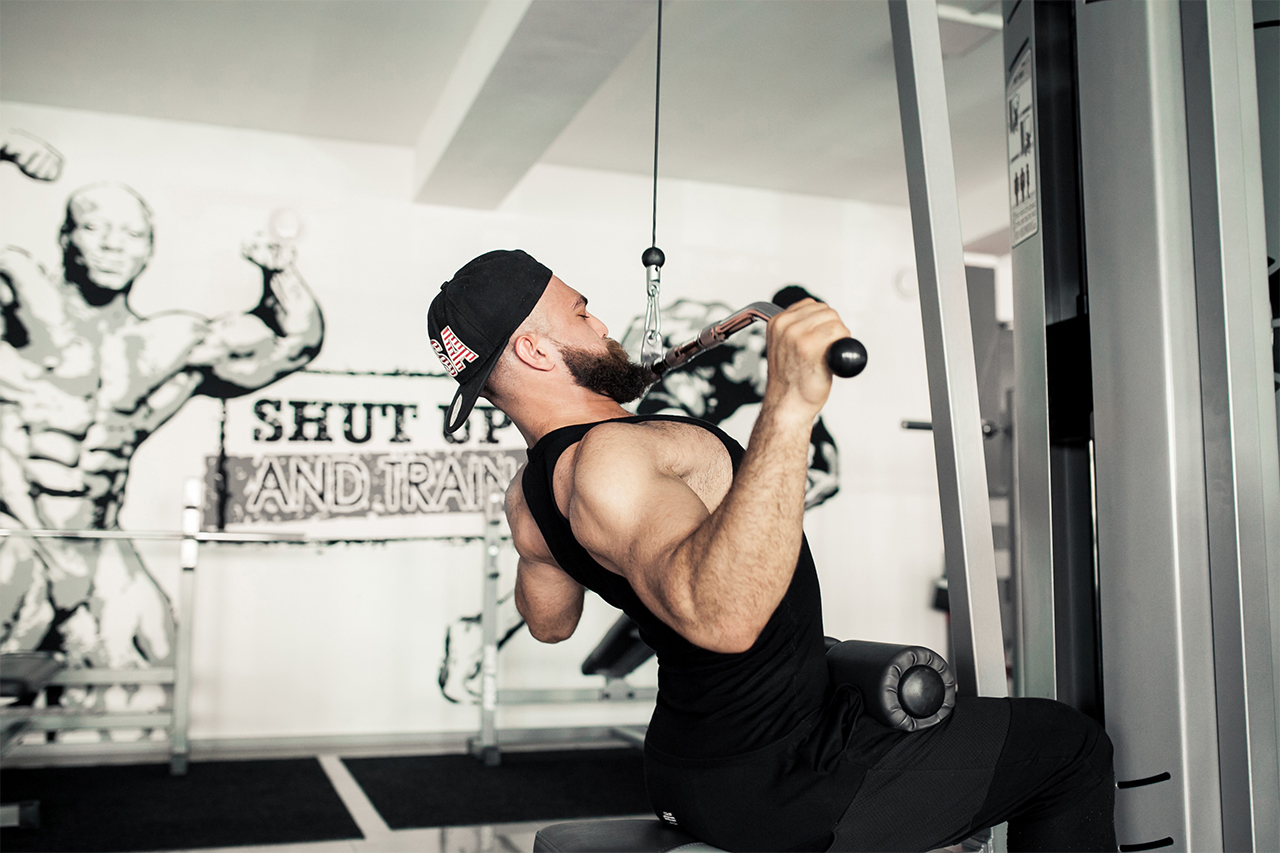Usually, as we’ve mentioned in previous articles, a hypertrophy focused workout is done within the optimal intensity range. That is, 70~85%, using 6-8 reps for the upper body and 55-70% intensity with 60-70% higher repetitions for the lower body.
Upping the intensity increases your strength and breaks the negative adaptation. However, going up to the 90-95% intensity levels, makes it impossible for us to reach the desired 6-8 repetitions until failure. This is where the pause-rest method comes in use.
How to Apply the Pause-Rest Method
Use 90% of your 1RM for 3 repetitions. After 30-45 seconds of rest, complete 2-3 repetitions more. After another 40-60 seconds, again, 2 reps, then another minute of rest and we finish up with a final 1-2 repetitions with the same weight.
The muscle hypertrophy is sought by stimulating the white B muscle fibers (90-100% of 1RM/ 1-3RM). Something, that’s not possible through the usual bodybuilding workouts.
This method gets the bodybuilding workout close to that of weightlifters and power-lifters. It also requires maximum focus, certain levels of motivation and most importantly- Strict form of the exercises.
The successful application of the pause-rest method is without a doubt a reflective increase of the nerve impulses from the CNS to the muscle fibers (from 10-12 to 50 per second).
So, in reality, we also develop our nerve paths, which gives us an overall positive effect upon the nerve-muscle regulation.
Overcoming extreme weights (90~100% intensity) is not possible without keeping a hold of our breath and pushing extremely hard. This physiologically unfavorable situation is mandatory. That is simply because doing this, we create conditions for the rib cage to be perfectly fixed, acting like support for the limbs.
From there, through flexion of the separate muscles, we overcome significant weights in the 90~100% intensity range.
On the other side, holding your breath, leads to an increase of the CO2 in the lungs. Through receptors in the rib cage, a reflective reaction occurs. It is expressed with the increased contraction power of the skeletal musculature.
It is good to know that during a bigger strain and holding your breath, blood pressure goes up for elite athletes, and it goes down for beginners.
From here, we can conclude that during the lower values of blood pressure, the needed cerebral blood-flow is not granted, which might lead to a momentary black-out of the individual.
This is a problem that occurs with elite athletes, mainly when they’re going for an attempt for a personal best lift. This phenomenon shows up only when the hold of breath is combined with a strong strain, simply because holding your breath for 30 seconds is not even capable of changing your pulse frequency.
It is accepted, that when you’re overcoming maximum, or close to your maximum intensity, the optimal and safe amounts of oxygen intake, should be around 1/3 of your total, vital capacity.
This is due to the fact that during an intense workout, it’s hard to take that quantity of air precisely, we can just focus on a deep exhale, and let our lungs take in as much air as needed. However, hyperventilation should not be reached, as it makes the negative strain even worse.
Logically, this method does not have a wide range of application, due to it’s excessive levels of intensity, that are distinctive from the typical bodybuilding hypertrophy training.
We should really pick appropriate times and exercises to apply this principle and not do it every workout, simply because, the risk of injury is higher. The appropriate exercises for this method are very limited, and are mostly compound exercises: Incline/flat bench press, cable rows/pull downs, barbell curls, etc.
The strongly powerful character of this method, defines it as a tool we can use during the off-season. The relatively big weights used with it, require perfect execution of each exercise.
Summary
As we already noted, there isn’t any other bodybuilding method, with which we apply such high levels of intensity. This inevitably links this method to the principle of progressive overload.
The same thing explains the activation of the white B muscle fibers, which links the pause-rest method to the principles of De-adaptation and priority. In combination with more extensive sets, this method is actually the fundament of the contrast principle.
The extremely high intensity, that the pause-rest method implies, as well as the need for total muscle mobilization and focus, don’t allow us to combine it with other specialized methods.

